The Stringed Instrument Database
L

Laruan
Alternative names: La Ruan,
Origin: China, 20th century.
Tuning:
Strings/Courses:
Further notes:
Scale Length:
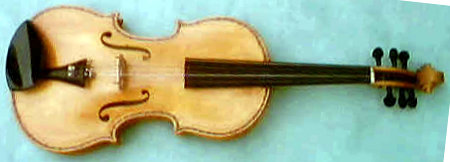
Latfiol
Alternative names:
Origin: Sweden.
Tuning: A, D, G, E or A, E, A, E
Strings/Courses: 4/4
Further notes: 4 played strings and 2 sympathetic strings. Steel strings.
Scale Length:

Langeleik
Alternative names: Langleik
Origin: Norway. The earliest example found was from 1524.
Tuning: The melody string is usually tuned to A. The drone strings are tuned to triads based on the melody string.
Strings/Courses: 2/2, 3/3, 4/4, 5/5, 6/6 7/7 or 8/8. 1 melody string and up to 8 drone strings.
Further notes: Probably evolved from the German Scheitholt.
Scale Length: No Standard.

Langspil
Alternative names:
Origin: Iceland, 18th century.
Tuning:
Strings/Courses: 3/3 or 4/4. 1 melody string and 2 or 3 drone strings.
Further notes:
Scale Length: 700-1000mm.
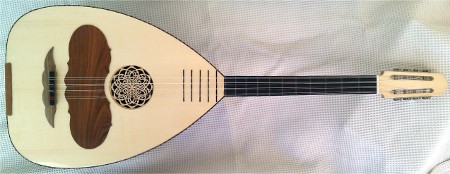
Laouto
Alternative names: Laghouto
Origin: Greece.
Tuning: C2 C3, G2 G3, D2 D3, A3 A3 (Mainland Greek tuning) or G2 G3, D2 D3, A2 A3, E3 E3 (Cretan tuning)
Strings/Courses: 8/4
Further notes: Steel strings.
Scale Length: 680-750mm
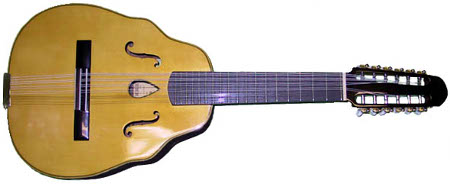
Laud
Alternative names:
Origin: Spain, medieval period.
Tuning: G#2 G#2, C#3 C#3, F#3 F#3, B3 B3, E4 E4, A4 A4 (One octave below the Bandurria).
Strings/Courses: 12/6
Further notes: Steel strings.
Scale Length: 475mm
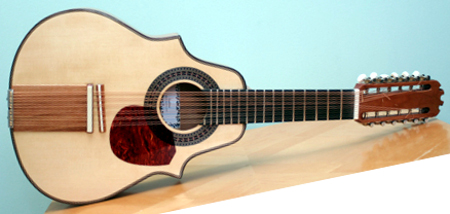
Laud, Cuban
Alternative names: Laud Cubano
Origin: Cuba
Tuning: D3 D3, F#3 F#3, B3 B3, E4 E4, A4 A4, D5 D5.
Strings/Courses: 12/6
Further notes: Steel strings.
Scale Length: 400mm
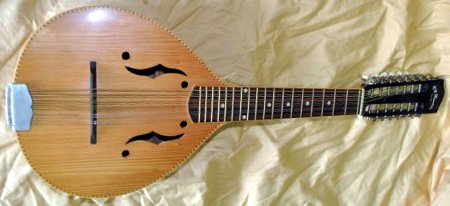
Laud, Philippine
Alternative names:
Origin: The Philippines, during Spanish colonial rule (1521-1898).
Tuning: F#2, B2 B2, E3 E3, A3 A3 A3, D4 D4 D4, G4 G4 G4.
Strings/Courses: 14/6
Further notes: Steel strings.
Scale Length: 440-450mm
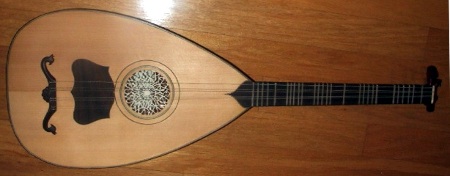
Lavta
Alternative names: Sometimes called 'Politiko Laouto' when played by Greek musicians.
Origin: Istanbul, Turkey. Late 19th century. Now played in Turkey, Greece, Armenia and elsewhere.
Tuning: A2, D3 D3, G3 G3, C4 C4 or A2, D3 D3, A3 A3, D4 D4 or G2, C3 C3, G3 G3, C4 C4.
Strings/Courses: 7/4
Further notes:
Scale Length: 660mm or sometimes longer (especially on older instruments).

Leiqin
Alternative names: Leihu
Origin: China, 1920's.
Tuning:
Strings/Courses:
Further notes: Chinese for 'Thunderous instrument'.
Scale Length:
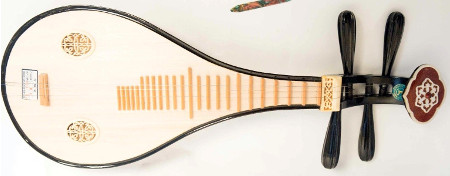
Liuqin
Alternative names: Liuyeqin
Origin: China during the Tang Dynasty (AD 618 - 907).
Tuning: G3, D4, G4, D5
Strings/Courses: 4/4 or 3/3
Further notes: Chinese for 'willow leaf instrument'. Steel strings.
Scale Length: 400-420mm
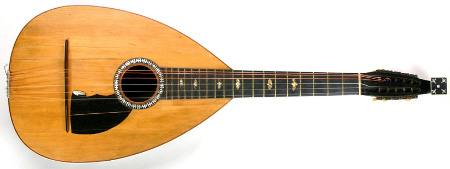
Liuto cantabile
Alternative names: Liuto moderno
Origin: Naples, Italy. Late 19th century.
Tuning: C2 C2, G2 G2, D3 D3, A3 A3, E4 E4.
Strings/Courses: 10/5 (sometimes some of the 5 courses are single).
Further notes: Italian for 'singing lute' (liuto cantabile) or 'modern lute' (liuto moderno). Despite the name, it is much more closely related to the mandolin family than the lute family. Steel strings.
Scale Length: 610mm

Lotar
Alternative names: Gimbri, Guimbri
Origin: Morocco
Tuning: Usually tuned in fourths or fifths.
Strings/Courses: Usually 3/3 or 4/4 but can be 2/2, 5/5 or 6/6.
Further notes:
Scale Length: The smaller versions are usually around 300mm, and the larger ones around 500mm, but there is some variation.
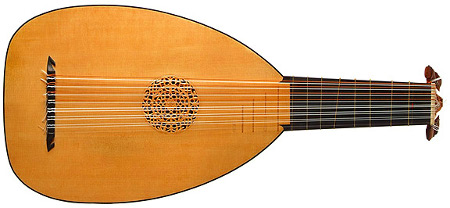
Lute
Alternative names:
Origin: Europe, 6th-9th century.
Tuning: A common 6-course tuning is G3 G2, C4 C2, F3 F3, A3 A3, D4 D4, G4, and a common 7-course tuning is F3 F2, G3 G2, C3 C4, F3 F3, A3 A3, D4 D4, G4. Far too many tunings to list them all here however, as well as far too many different numbers of courses.
Strings/Courses: Common string arrangements are 9/5, 11/6, 13/7 and 15/8.
Further notes: Most instruments in use today are recreations of ancient instruments. There was a huge different number of courses used. Gut or nylon strings.
Scale Length: Varied throughout the centuries.
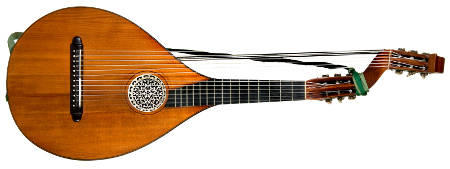
Lute, Swedish
Alternative names: Svenska Lutan
Origin: Sweden, between 1750 and 1820.
Tuning: The 6 fretted strings are tuned G2, C3, F3, A3, D4, G4 (like a lute) or E2, A2, D3, G3, B3, E4 (like a guitar) or C#3, D3, E3, A3, C#4, E4 (traditional tuning but now rarely used). The bass strings are tuned in whole tones down from the lowest fretted string.
Strings/Courses: Usually 6/6 with 6 unfretted bass strings, but some older version have 8/8 with 7 or 8 unfretted bass strings.
Further notes: The strings can be nylon or steel.
Scale Length: Around 500mm
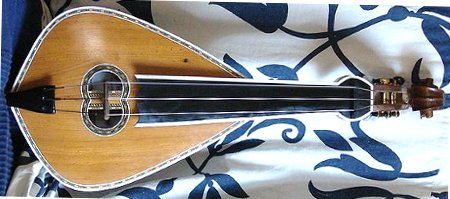
Lyra
Alternative names: Cretan Lyra, Lyraki
Origin: Crete, Greece between 9th-12th century.
Tuning: D3, A3, E5
Strings/Courses: 3/3
Further notes: Not to be confused with the medieval Byzantine Lyra, or the Ancient Lyre. Steel strings.
Scale Length:

Lyra, Calabrian
Alternative names: Calabrian Lira, Lira Calabrese
Origin: Calabria, southern Italy.
Tuning:
Strings/Courses: 3/3
Further notes: Not to be confused with the medieval Byzantine Lyra, or the Ancient Lyre. Steel strings.
Scale Length: